|
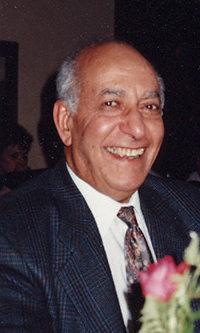 F. R. Ahmed, photo taken on his 73rd birthday, 21st November 1997. F. R. Ahmed, photo taken on his 73rd birthday, 21st November 1997.


Fig 1: A Ferranti Model No. 1 computer of the 1950's installed at the University of Manchester, UK.
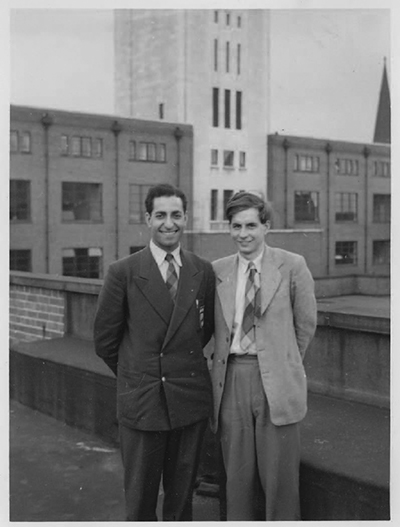
Fig 2: Farid R. Ahmed, and Durward William John Cruickshank, University of Leeds, UK, 1953
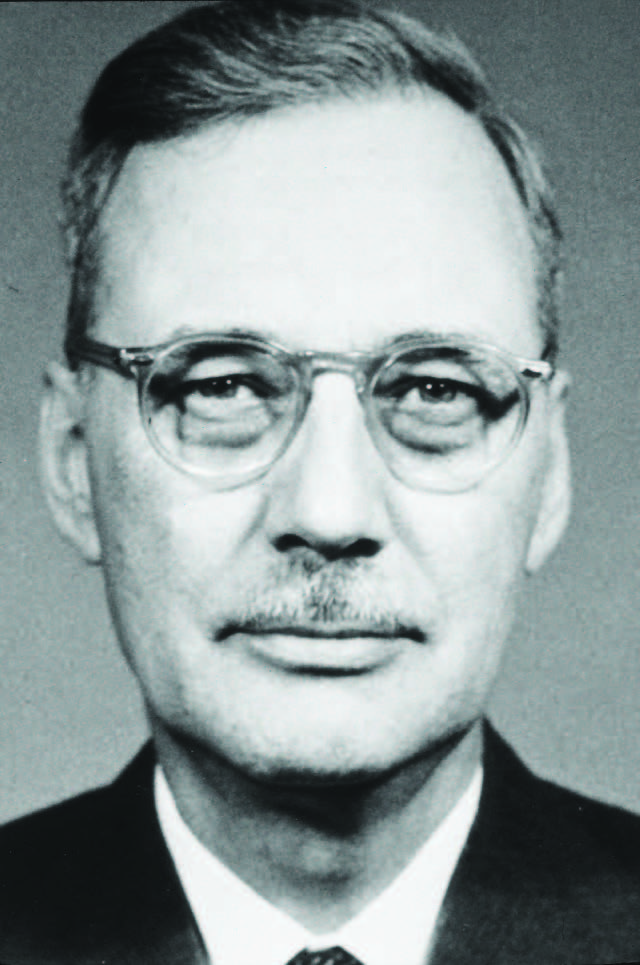 
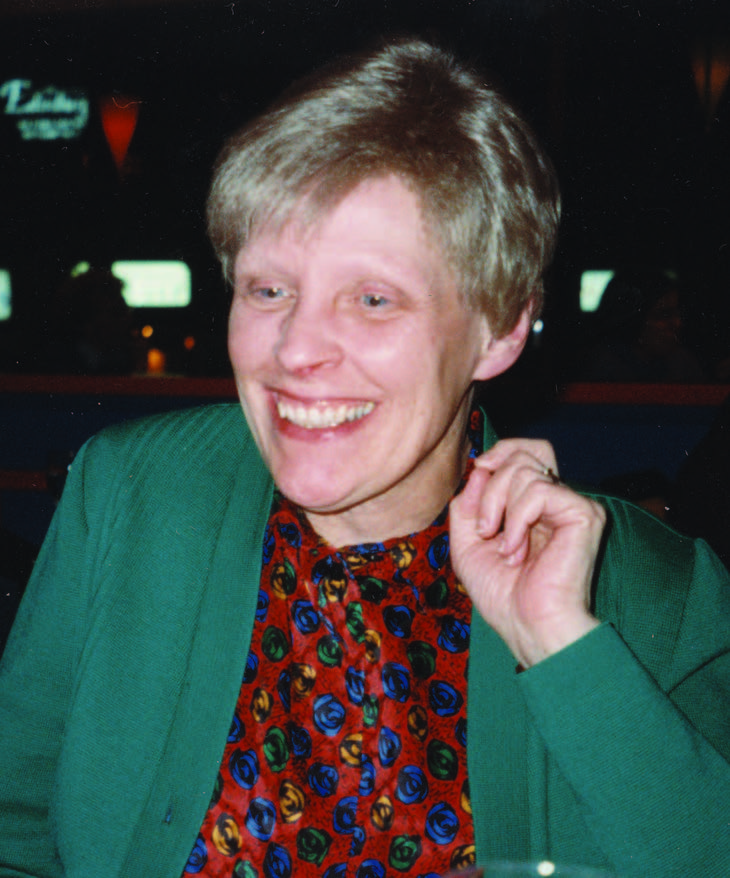 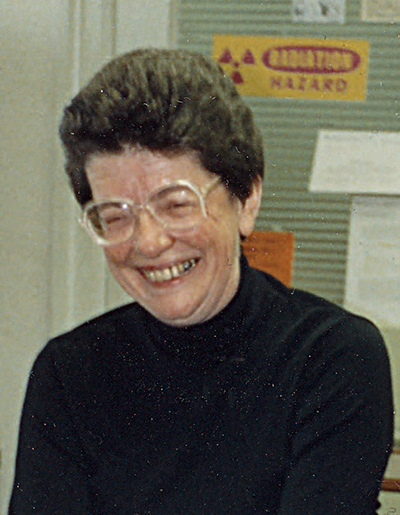
Fig 3: Co-authors of the NRC FORTRAN
package of programs:
a) Dr. William Howard Barnes, second Head of
crystallography at the NRC (circa 1966);
b) Sydney R. Hall (circa early 1970's),
c) Carol P. Huber (photo taken in April 1997) &
d) Margaret E. Pippy (photo taken 29th July 1988).
|
After graduating in 1950 with a BSc Honours in mathematics from the University of Leeds, I wanted to continue my study for a PhD in mathematics. However, the Mathematics Department told me to see Professor E. G. Cox, Head of the Inorganic and Physical Chemistry Department. When I met Professor Cox he introduced me to one of his staff members, Dr. Durward W.J. Cruickshank. They explained that they would be interested in having me pursue a PhD degree in crystallography. Durward would be my supervisor, and the title of my thesis would be "Development of Mathematical Methods for the Determination of Molecular Structures by X-ray Analysis." I agreed to give it a try.
The first year was spent learning about crystallography and Hollerith equipment (business punch-card machines in the U.K.) and their use for crystallographic calculations as described by Cox, Gross & Jeffrey (1949). Our use of the Ferranti Mark II electronic digital computer at the University of Manchester, shown in Fig. 1, started soon after its installation in the summer of 1951. The article by Ahmed & Cruickshank (1953) gives some details of the computer and the crystallographic programs that we devised in that period. They were for the calculation of structure factors, differential syntheses with correction for finite summations as described by Booth (1946 a, b), and the estimation of errors according to Cruickshank (1949). For maximum efficiency, those initial programs were space-group specific. However, sections of the programs could be altered easily and checked to adapt them for other space groups.
Soon after starting this work, Durward became my mentor, and remained a highly respected and valuable friend till he passed away in July 2007. The photograph in Fig. 2, of the two of us, was taken in 1953 after the farewell party that the Chemistry Department held before my return to Egypt. For the next two years, I taught mathematics to engineering students at the University of Alexandria.
Before 1955, the University of Toronto installed a Ferranti Mark II computer just like the one we had used at Manchester. The X-ray Diffraction group at the National Research Council of Canada (NRC) decided to use that computer for their crystallographic calculations. Dr. W.H. Barnes, head of the group, and one of his staff members, Dr. David C. Phillips, met in Ottawa with Dr. Peter J. Wheatley, who was a crystallographer at the University of Leeds while I was studying there. Those three decided that crystallographic computing in Ottawa would benefit by bringing in someone with my experience in that field. That was why I received an offer to join the NRC as a postdoctorate fellow for one year. I accepted gladly because of my love for crystallography and computers. My wife Jean and I then immigrated to Canada in 1955, with the hope that we might be able to settle there for good.
The NRC crystallographers got permission to use the Ferranti computer at the U. of T. (FERUT), as much as they needed. At that time, crystallography in Canada was well established at a few universities and government laboratories. They did powder diffraction and single-crystal analyses of organic and inorganic compounds as well as minerals and metal complexes. Their crystals would have varied space groups. It was therefore essential to devise generalized crystallographic programs, which can handle all space groups, and economize on the calculations by taking full advantage of the space group symmetries, and the corresponding structure factor and electron-density expressions, given in the International Tables for X-ray Crystallography (1952). To achieve that, the appropriate equations of the space group were represented by a simple pseudo code, which directed a short interpretive routine to make the necessary changes to the main program; so that it calculated the required equations. The article by Ahmed & Barnes (1958) gives some details of the NRC Generalized crystallographic programs.
After FERUT was retired, we used computers in Ottawa, starting with the IBM 650 then the IBM 1620, and in each case we used the symbolic codes of those computers. Finally in 1965 the NRC Computation Center installed an IBM 360. This time all our crystallographic programs were written in FORTRAN IV, by F.R. Ahmed, S.R. Hall, C.P. Huber & M.E. Pippy (1966). That was the last rewrite of the NRC generalized crystallographic programs. These programs served us till about 1986. By that time our crystallography group became part of the NRC Institute of Biological Sciences, under the new name of Protein Crystallography Group. Our main research was now directed to the study of macromolecular structures. Computer programs for these studies were all imported from other laboratories. The program FRODO for computer graphics was in daily use by our group.
The programs that we wrote in machine or symbolic language lasted for an average of 3.3 years, while the FORTRAN programs lasted for 20 years. The FORTRAN package was also more versatile for distribution to other laboratories in Canada and abroad. The technical advances of the last half century, by producing powerful X-ray beams, automatic data collection with diffractometers/area detectors, and computers with phenomenal speeds, have benefited most areas of crystallography. I consider myself lucky to have witnessed these interesting developments.
It gives me great pleasure to show in Fig. 3 the photos of four NRC colleagues who are closely related to this article. They are Dr. W. H. Barnes, FRSC, our section Head, Sydney R. Hall, Carol P. Huber and Margaret E. Pippy, co-authors of the NRC FORTRAN package of crystallographic programs.
I am grateful to Lachlan M. D. Cranswick for inviting me to write this article, and for his help with the Figures.
References
Ahmed, F. R. & Barnes, W. H. (1958) Acta Cryst. 11, 669-671.
Ahmed, F. R. & Cruickshank, D. W. J. (1953) Acta Cryst. 6, 765-769. Ahmed, F. R., Hall, S. R., Huber, C. P. & Pippy, M. E. (1966) NRC Crystallographic Programs for the IBM 360 System, World List of Crystallographic Computer Programs, 2nd ed., Appendix p. 52.
Booth, A. D. (1946a) Trans. Faraday Soc. 42, 444-448.
Booth, A. D. (1946b) Proc. Roy. Soc., A, 188, 77-91.
Cox, E. G., Gross, L. & Jeffrey, G. A. (1949) Acta Cryst. 2, 351-355.
Cruickshank, D. W. J. (1949) Acta Cryst. 2, 65-82. International Tables for X-ray Crystallography (1952), Vol. 1. Birmingham: Kynoch Press.
|